

The Two Particle Universe
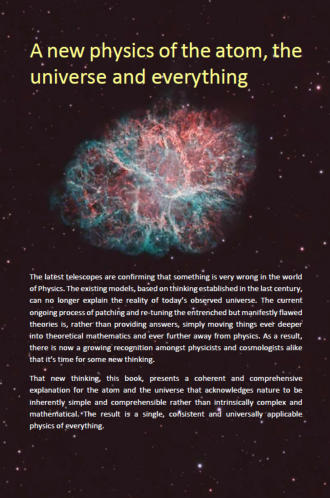
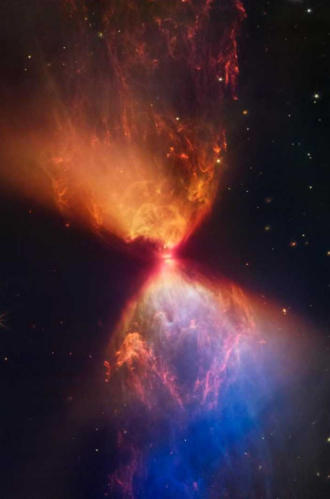
The Two Particle Universe Front cover
The Two Particle Universe Back cover
The
Two
Particle
Model
of
the
Atom
and
the
Universe
is
a
new
theory
of
physics,
a
complete
rethinking
of
how
the
universe
works.
It
simply
and
straightforwardly
explains
everything
from
creation
to
the
structure
of
the
atom,
gravity,
stars
and
galaxies
without
invoking
the
problematic
hypothetical
and
mathematical
versions
of
reality
at
the
core
of
the
current
popular
models.
The
new
physics
in
this
book
is
presented
in
clear,
easily
understandable
language
which
builds
in
simple,
logical
steps
from
the
natural
creation
of
the
first
particles
to
the
formation
of
all
stars
and
galaxies.
Along
the
way,
it
explains
how
gravity,
the
electrostatic
force
and
magnetism
all
arise
from
one
single
fundamental
force
and
how,
together,
they
influence
the
workings
of
everything
in
the
universe from the small, at the sub-atomic scale to the large, at the cosmic scale.
This
is
a
book
about
the
universe
.
It
begins
with
the
essential
nature
of
an
infinite
universe,
describes
how
it
naturally
created
all
the
particles,
matter,
stars
and
galaxies
within
it
and
ends
with
explanations for its overall stability as well as its locally often spectacular instabilities.
The Standard Model of physics is a construct of large numbers of real, hypothetical and virtual
particles and fields interacting in highly complex ways within what can only be described as a
mathematical version of reality. Over the years, as improved observational tools have exposed
inconsistencies and shortcomings, the theory has been progressively adapted and expanded by
adding more and more hypothetical particles, forces and mathematical complexity into the mix until,
today, it pretty much fits anything you could throw at it. Now, when something new comes along
which cannot be explained, the accepted fallback solution is simply to add in yet more hypotheticals
and complexity until the theory once more tallies with the new information.
The result is a super-complex, inherently mathematical, catch-all behemoth of a theory which,
because it offers its own in-built explanations for most currently-observed atomic behaviours, it is
considered to be an outstanding success.
Except that it doesn’t explain everything. It cannot explain gravity. Or the electron. Or the lack of
antimatter it says should exist. It cannot explain the behaviour of stars and galaxies without recourse
to more hypotheticals such as dark matter and dark energy. It is incongruent with the other great
consensus theory of the universe, General Relativity and so clearly one, or both, must be flawed. Just
as the Standard Model doesn’t work at the large scale, General Relativity doesn’t even come close to
working at the atomic scale. One theory describes the universe in terms of hypothetical fields and the
other in terms of four-dimensional constructs and, because these completely different, unrelated
versions of physics can each exist only in a mathematical version of reality, both are continually being
confounded by real-world observations. Common-sense alone tells us that the universe is real, not
mathematical.
Physics is physics. It doesn’t change because something is bigger or smaller or because there’s more
of it around. It clearly makes no sense to have to use one version of physics to explain matter at the
atomic scale and then a completely different version when the same matter exists in larger
quantities. And then yet another version, based on probability and non-reality, to account for all the
bits that these two, even when combined, still cannot explain. However, that is exactly where we are
at the moment.
The Two Particle Model, unlike Quantum Field Theory with its universal aether of hypothetical
fundamental fields, is a particle model based on real, measurable particles. We have known for over 100
years that charge is quantised. A quantum of charge is real and precisely measured with a known charge
of 1.6x10
-19
Coulombs. The new physics in this book simply acknowledges positive and negative quanta
to be the sole fundamental particles which fill the whole infinite universe and from which everything in
the universe is made.
The elementary particles comprising protons and atoms are simply natural orbital arrangements of these
quanta. This means that all atomic and subatomic particles, the structure of the atom, the creation of
matter, the formation and behaviour of stars and galaxies all become understandable and explainable in
terms of just two fundamental particles and the fundamental force of attraction between them. There’s
no need to invoke a hypothetical singularity, cosmic inflation, dark matter, dark energy, gravitons or
curved spacetime - everything becomes easily explained without them and understandable using the
basic laws of physics rather than the bespoke laws of complex mathematics.
Because particles such as quarks, gluons, W & Z bosons, virtual particles and their proposed anti-
particles are all hypothetical constructs within a mathematical version of reality, the huge weight of
convoluted mathematical explanation surrounding them simply disappears. With just one fundamental
force, not four as required by the Standard Model, and just two real and measurable fundamental
quanta, the workings of the atom and the universe immediately become clear and obvious, consistent
and easily understandable at all levels from the subatomic to stars and galaxies.
The Two Particle Model can be represented schematically as follows:



6” x 9” (153 x 228mm)
177 pages
Black & white
ISBN 978-1-0683160-0-5
Language: English
Paperback

Delivery 5-10 days
The Two Particle Model of Physics



The two fundamental quanta naturally combine to produce the four elementary
particles which together form all atoms, matter, stars and galaxies throughout the
universe. As shown in the above schematic, positrons have a central positive
interactive quantum and electrons a central negative interactive quantum.

The Two Particle Universe - Chapters
Preface
1 Introduction
2 The Two Particle Model (Schematic)
3 Particles, Fields & Relativity
Why Quantum Field Theory in its current form has produced flawed outcomes and cannot be
reconciled with General Relativity.
4 Occam's Razor
5 Quantum Space & The Fundamental Force
The impossibility of pre-creation empty space and the necessary existence of quantum space;
a description of its nature; its constituent fundamental quanta; their configurations and
behaviours; the fundamental force as the sole force in nature.
6 The Quantum
The intrinsic properties of fundamental quanta including charge, size and spin; quantum pairs;
zero-point energy.
7 Mass
A definition of mass and explanations for why some particles are massive and others have zero
mass.
8 The Speed of Light
Why the speed of light is constant in a given medium; resonant mass; the orbital structure and
speed of neutrinos and photons; neutrino and photon orientation; photon energy loss with
distance travelled.
9 The Four Elementary Particles
The structure of the four elementary particles, the neutrino, photon, electron and positron.
10 The Neutrino
The structure and formation of the neutrino and how neutrinos become energised and
increase in orbital size. The properties of neutrinos, explained here, provide the underlying
mechanism for the electrostatic force, gravity and for the creation of matter.
11 The n-neutrino and p-neutrino
Terminology for the different orbital polarity states of neutrinos; n-neutrinos and p-neutrinos.
12 The Electrostatic Force
An explanation for the electrostatic force; attraction and repulsion; why it is not a fundamental
force; range.
13 Static Electricity
How dipoles in a material interact with an electric field and how this produces static charge.
14 Gravity
An explanation for gravity; why it is such a weak force; why it is not a fundamental force; the
Casimir Effect; gravity and light; gravity and temperature.
15 The Photon
The structure of photons; how photons are energised; size change with energy; photon
orientation; n-photons and p-photons; spin; interactions with electrons and other particles;
photon redshift.
16 Electrons & Positrons
A description of the elementary particles the electron and the positron; their structure, size,
mass, speed and stability; surrounding neutrino clouds.
17 Electron Orbits
An explanation for the discrete orbital energy levels of atomic electrons; the photo-electric
effect; how and why a gas discharge tube produces light with a characteristic energy; atomic
absorption and emission spectra.
18 Magnetism
The nature of magnetism; behaviour of electrons in a magnetic field; repulsion and attraction
between electrical currents; induced current and Fleming’s Right Hand Rule.
19 Pair Production & Annihilation
Electron-positron pair production and electron-positron annihilation.
20 Matter Creation
How matter is created from photon and neutrino interactions in a high density electron
environment and an explanation for the birth of stars.
21 Proton Assembly, Size & Stability
How protons are assembled and the formation of atoms; proton size; maximum and minimum
size for a proton; the size of protons within atoms; the formation and decay of muons and
antimuons.
22 The Neutron
An explanation for the neutron and the force that makes it bind to a proton. Why a free
neutron is unstable and how it decays into a proton and an electron.
23 Creation
The formation of the first elementary particles leading to the creation of matter in the universe;
why our universe is made from matter and not antimatter; antimatter universes.
24 Matter in the Universe
Star formation; supernovae; nebulae; galaxies; galactic jets; galactic rotation; quasar ghosts;
variable stars; GRBs; black holes; neutron stars; dark matter and dark energy; matter and
antimatter; matter evaporation; the cosmic microwave background; stability and future of the
universe; power generation.
25 Relativity
Quantum space as a single inertial frame of reference; the constancy of the speed of light;
relativistic time dilation; relative motion; red/blueshift; gravitational lensing.
26 Optics and Quantum Mechanics
A brief overview of basic optics: reflection, refraction, diffraction and polarisation; the Bell Test;
Quantum Mechanics; quantum computing.
27 Orbital Structures
28 Summary
29 Conclusion




Four Elementary Particles
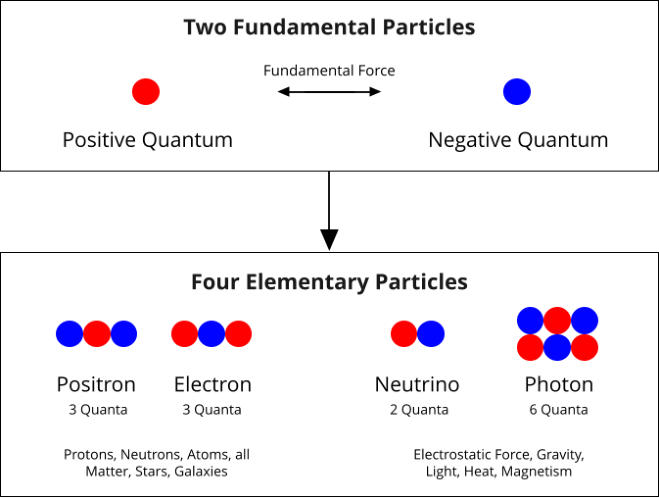























The Two Particle Universe


ISBN 978-1-0683160-0-5


The Two Particle
Universe
The Two Particle Universe
Front cover
The Two Particle Universe
Back cover
The
Two
Particle
Model
of
the
Atom
and
the
Universe
is
a
new
theory
of
physics,
a
complete
rethinking
of
how
the
universe
works.
It
simply
and
straightforwardly
explains
everything
from
creation
to
the
structure
of
the
atom,
gravity,
stars
and
galaxies
without
invoking
the
problematic
hypothetical
and
mathematical
versions
of
reality
at
the
core
of
the
current
popular
models.
The
new
physics
in
this
book
is
presented
in
clear,
easily
understandable
language
which
builds
in
simple,
logical
steps
from
the
natural
creation
of
the
first
particles
to
the
formation
of
all
stars
and
galaxies.
Along
the
way,
it
explains
how
gravity,
the
electrostatic
force
and
magnetism
all
arise
from
one
single
fundamental
force
and
how,
together,
they
influence
the
workings
of
everything
in
the
universe
from
the
small,
at
the
sub-atomic
scale
to
the
large, at the cosmic scale.
This
is
a
book
about
the
universe
.
It
begins
with
the
essential
nature
of
an
infinite
universe,
describes
how
it
naturally
created
all
the
particles,
matter,
stars
and
galaxies
within
it
and
ends
with
explanations
for
its
overall
stability
as
well
as
its
locally
often
spectacular
instabilities.
The Standard Model of physics is a construct of large
numbers of real, hypothetical and virtual particles and
fields interacting in highly complex ways within what
can only be described as a mathematical version of
reality. Over the years, as improved observational
tools have exposed inconsistencies and shortcomings,
the theory has been progressively adapted and
expanded by adding more and more hypothetical
particles, forces and mathematical complexity into the
mix until, today, it pretty much fits anything you could
throw at it. Now, when something new comes along
which cannot be explained, the accepted fallback
solution is simply to add in yet more hypotheticals and
complexity until the theory once more tallies with the
new information.
The result is a super-complex, inherently
mathematical, catch-all behemoth of a theory which,
because it offers its own in-built explanations for most
currently-observed atomic behaviours, it is considered
to be an outstanding success.
Except that it doesn’t explain everything. It cannot
explain gravity. Or the electron. Or the lack of
antimatter it says should exist. It cannot explain the
behaviour of stars and galaxies without recourse to
more hypotheticals such as dark matter and dark
energy. It is incongruent with the other great
consensus theory of the universe, General Relativity
and so clearly one, or both, must be flawed. Just as the
Standard Model doesn’t work at the large scale,
General Relativity doesn’t even come close to working
at the atomic scale. One theory describes the universe
in terms of hypothetical fields and the other in terms
of four-dimensional constructs and, because these
completely different, unrelated versions of physics can
each exist only in a mathematical version of reality,
both are continually being confounded by real-world
observations. Common-sense alone tells us that the
universe is real, not mathematical.
Physics is physics. It doesn’t change because
something is bigger or smaller or because there’s
more of it around. It clearly makes no sense to have to
use one version of physics to explain matter at the
atomic scale and then a completely different version
when the same matter exists in larger quantities. And
then yet another version, based on probability and
non-reality, to account for all the bits that these two,
even when combined, still cannot explain. However,
that is exactly where we are at the moment.
The Two Particle Model, unlike Quantum Field Theory
with its universal aether of hypothetical fundamental
fields, is a particle model based on real, measurable
particles. We have known for over 100 years that
charge is quantised. A quantum of charge is real and
precisely measured with a known charge of 1.6x10
-19
Coulombs. The new physics in this book simply
acknowledges positive and negative quanta to be the
sole fundamental particles which fill the whole infinite
universe and from which everything in the universe is
made.
The elementary particles comprising protons and
atoms are simply natural orbital arrangements of
these quanta. This means that all atomic and
subatomic particles, the structure of the atom, the
creation of matter, the formation and behaviour of
stars and galaxies all become understandable and
explainable in terms of just two fundamental particles
and the fundamental force of attraction between
them. There’s no need to invoke a hypothetical
singularity, cosmic inflation, dark matter, dark energy,
gravitons or curved spacetime - everything becomes
easily explained without them and understandable
using the basic laws of physics rather than the
bespoke laws of complex mathematics.
Because particles such as quarks, gluons, W & Z
bosons, virtual particles and their proposed anti-
particles are all hypothetical constructs within a
mathematical version of reality, the huge weight of
convoluted mathematical explanation surrounding
them simply disappears. With just one fundamental
force, not four as required by the Standard Model, and
just two real and measurable fundamental quanta, the
workings of the atom and the universe immediately
become clear and obvious, consistent and easily
understandable at all levels from the subatomic to
stars and galaxies.
The Two Particle Model can be represented
schematically as follows:

6” x 9” (153 x 228mm)
177 pages
Black & white
ISBN 978-1-0683160-0-5
Language: English
Paperback

Delivery 5-10 days
The Two Particle Model of Physics



The two fundamental quanta naturally combine to
produce the four elementary particles which together
form all atoms, matter, stars and galaxies throughout
the universe. As shown in the above schematic,
positrons have a central positive interactive quantum
and electrons a central negative interactive quantum.

Preface
1 Introduction
2 The Two Particle Model
(Schematic)
3 Particles, Fields & Relativity
Why Quantum Field Theory in its current form has
produced flawed outcomes and cannot be
reconciled with General Relativity.
4 Occam's Razor
5 Quantum Space & The
Fundamental Force
The impossibility of pre-creation empty space and
the necessary existence of quantum space; a
description of its nature; its constituent
fundamental quanta; their configurations and
behaviours; the fundamental force as the sole
force in nature.
6 The Quantum
The intrinsic properties of fundamental quanta
including charge, size and spin; quantum pairs;
zero-point energy.
7 Mass
A definition of mass and explanations for why
some particles are massive and others have zero
mass.
8 The Speed of Light
Why the speed of light is constant in a given
medium; resonant mass; the orbital structure and
speed of neutrinos and photons; neutrino and
photon orientation; photon energy loss with
distance travelled.
9 The Four Elementary Particles
The structure of the four elementary particles, the
neutrino, photon, electron and positron.
10 The Neutrino
The structure and formation of the neutrino and
how neutrinos become energised and increase in
orbital size. The properties of neutrinos, explained
here, provide the underlying mechanism for the
electrostatic force, gravity and for the creation of
matter.
11 The n-neutrino and p-neutrino
Terminology for the different orbital polarity states
of neutrinos; n-neutrinos and p-neutrinos.
12 The Electrostatic Force
An explanation for the electrostatic force;
attraction and repulsion; why it is not a
fundamental force; range.
13 Static Electricity
How dipoles in a material interact with an electric
field and how this produces static charge.
14 Gravity
An explanation for gravity; why it is such a weak
force; why it is not a fundamental force; the Casimir
Effect; gravity and light; gravity and temperature.
15 The Photon
The structure of photons; how photons are
energised; size change with energy; photon
orientation; n-photons and p-photons; spin;
interactions with electrons and other particles;
photon redshift.
16 Electrons & Positrons
A description of the elementary particles the
electron and the positron; their structure, size,
mass, speed and stability; surrounding neutrino
clouds.
17 Electron Orbits
An explanation for the discrete orbital energy levels
of atomic electrons; the photo-electric effect; how
and why a gas discharge tube produces light with a
characteristic energy; atomic absorption and
emission spectra.
18 Magnetism
The nature of magnetism; behaviour of electrons in
a magnetic field; repulsion and attraction between
electrical currents; induced current and Fleming’s
Right Hand Rule.
19 Pair Production & Annihilation
Electron-positron pair production and electron-
positron annihilation.
20 Matter Creation
How matter is created from photon and neutrino
interactions in a high density electron environment
and an explanation for the birth of stars.
21 Proton Assembly, Size & Stability
How protons are assembled and the formation of
atoms; proton size; maximum and minimum size
for a proton; the size of protons within atoms; the
formation and decay of muons and antimuons.
22 The Neutron
An explanation for the neutron and the force that
makes it bind to a proton. Why a free neutron is
unstable and how it decays into a proton and an
electron.
23 Creation
The formation of the first elementary particles
leading to the creation of matter in the universe;
why our universe is made from matter and not
antimatter; antimatter universes.
24 Matter in the Universe
Star formation; supernovae; nebulae; galaxies;
galactic jets; galactic rotation; quasar ghosts;
variable stars; GRBs; black holes; neutron stars;
dark matter and dark energy; matter and
antimatter; matter evaporation; the cosmic
microwave background; stability and future of the
universe; power generation.
25 Relativity
Quantum space as a single inertial frame of
reference; the constancy of the speed of light;
relativistic time dilation; relative motion;
red/blueshift; gravitational lensing.
26 Optics and Quantum Mechanics
A brief overview of basic optics: reflection,
refraction, diffraction and polarisation; the Bell
Test; Quantum Mechanics; quantum computing.
27 Orbital Structures
28 Summary
29 Conclusion
The Two Particle
Universe - Chapters




Four Elementary Particles
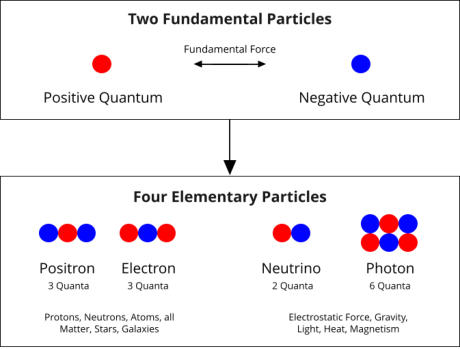




















The Two Particle Universe

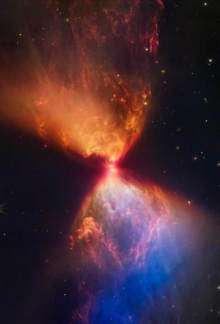



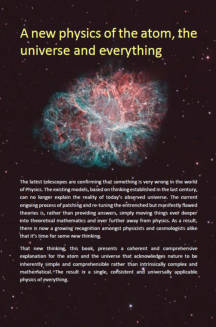


ISBN 978-1-0683160-0-5


The Two Particle Universe
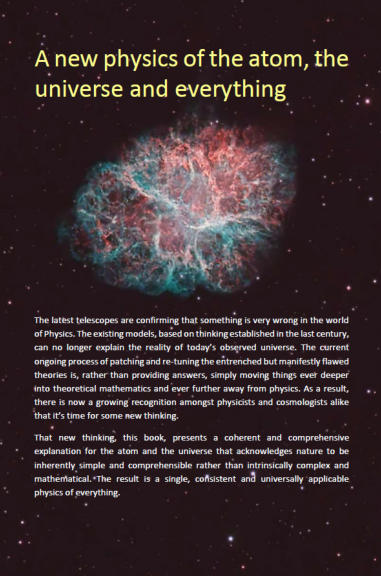
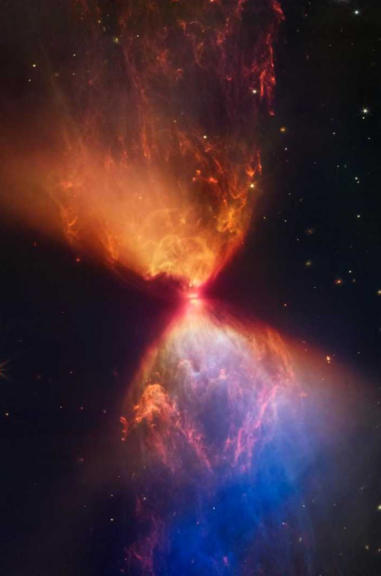
The Two Particle Universe Front cover
The Two Particle Universe Back cover
The
Two
Particle
Model
of
the
Atom
and
the
Universe
is
a
new
theory
of
physics,
a
complete
rethinking
of
how
the
universe
works.
It
simply
and
straightforwardly
explains
everything
from
creation
to
the
structure
of
the
atom,
gravity,
stars
and
galaxies
without
invoking
the
problematic
hypothetical
and
mathematical
versions
of
reality
at
the
core
of
the
current
popular
models.
The
new
physics
in
this
book
is
presented
in
clear,
easily
understandable
language
which
builds
in
simple,
logical
steps
from
the
natural
creation
of
the
first
particles
to
the
formation
of
all
stars
and
galaxies.
Along
the
way,
it
explains
how
gravity,
the
electrostatic
force
and
magnetism
all
arise
from
one
single
fundamental
force
and
how,
together,
they
influence
the
workings
of
everything
in
the
universe from the small, at the sub-atomic scale to the large, at the cosmic scale.
This
is
a
book
about
the
universe
.
It
begins
with
the
essential
nature
of
an
infinite
universe,
describes
how
it
naturally
created
all
the
particles,
matter,
stars
and
galaxies
within
it
and
ends
with
explanations
for
its
overall
stability
as
well
as
its
locally
often
spectacular instabilities.

The Standard Model of physics is a construct of large numbers of real, hypothetical and virtual particles and fields interacting in
highly complex ways within what can only be described as a mathematical version of reality. Over the years, as improved
observational tools have exposed inconsistencies and shortcomings, the theory has been progressively adapted and expanded by
adding more and more hypothetical particles, forces and mathematical complexity into the mix until, today, it pretty much fits
anything you could throw at it. Now, when something new comes along which cannot be explained, the accepted fallback solution is
simply to add in yet more hypotheticals and complexity until the theory once more tallies with the new information.
The result is a super-complex, inherently mathematical, catch-all behemoth of a theory which, because it offers its own in-built
explanations for most currently-observed atomic behaviours, it is considered to be an outstanding success.
Except that it doesn’t explain everything. It cannot explain gravity. Or the electron. Or the lack of antimatter it says should exist. It
cannot explain the behaviour of stars and galaxies without recourse to more hypotheticals such as dark matter and dark energy. It is
incongruent with the other great consensus theory of the universe, General Relativity and so clearly one, or both, must be flawed.
Just as the Standard Model doesn’t work at the large scale, General Relativity doesn’t even come close to working at the atomic scale.
One theory describes the universe in terms of hypothetical fields and the other in terms of four-dimensional constructs and, because
these completely different, unrelated versions of physics can each exist only in a mathematical version of reality, both are continually
being confounded by real-world observations. Common-sense alone tells us that the universe is real, not mathematical.
Physics is physics. It doesn’t change because something is bigger or smaller or because there’s more of it around. It clearly makes no
sense to have to use one version of physics to explain matter at the atomic scale and then a completely different version when the
same matter exists in larger quantities. And then yet another version, based on probability and non-reality, to account for all the bits
that these two, even when combined, still cannot explain. However, that is exactly where we are at the moment.
The Two Particle Model, unlike Quantum Field Theory with its universal aether of hypothetical fundamental fields, is a particle model
based on real, measurable particles. We have known for over 100 years that charge is quantised. A quantum of charge is real and
precisely measured with a known charge of 1.6x10
-19
Coulombs. The new physics in this book simply acknowledges positive and
negative quanta to be the sole fundamental particles which fill the whole infinite universe and from which everything in the universe
is made.
The elementary particles comprising protons and atoms are simply natural orbital arrangements of these quanta. This means that all
atomic and subatomic particles, the structure of the atom, the creation of matter, the formation and behaviour of stars and galaxies
all become understandable and explainable in terms of just two fundamental particles and the fundamental force of attraction
between them. There’s no need to invoke a hypothetical singularity, cosmic inflation, dark matter, dark energy, gravitons or curved
spacetime - everything becomes easily explained without them and understandable using the basic laws of physics rather than the
bespoke laws of complex mathematics.
Because particles such as quarks, gluons, W & Z bosons, virtual particles and their proposed anti-particles are all hypothetical
constructs within a mathematical version of reality, the huge weight of convoluted mathematical explanation surrounding them
simply disappears. With just one fundamental force, not four as required by the Standard Model, and just two real and measurable
fundamental quanta, the workings of the atom and the universe immediately become clear and obvious, consistent and easily
understandable at all levels from the subatomic to stars and galaxies.
The Two Particle Model can be represented schematically as follows:


The two fundamental quanta naturally combine to produce the four elementary
particles which together form all atoms, matter, stars and galaxies throughout
the universe. As shown in the above schematic, positrons have a central positive
interactive quantum and electrons a central negative interactive quantum.

The Two Particle Model of Physics

Delivery 5-10 days
6” x 9” (153 x 228mm)
177 pages
Black & white
ISBN 978-1-0683160-0-5
Language: English
Paperback




Four Elementary Particles
The Two Particle Universe - Chapters

Preface
1 Introduction
2 The Two Particle Model (Schematic)
3 Particles, Fields & Relativity
Why Quantum Field Theory in its current form has produced flawed outcomes and cannot be reconciled with General Relativity.
4 Occam's Razor
5 Quantum Space & The Fundamental Force
The impossibility of pre-creation empty space and the necessary existence of quantum space; a description of its nature; its constituent
fundamental quanta; their configurations and behaviours; the fundamental force as the sole force in nature.
6 The Quantum
The intrinsic properties of fundamental quanta including charge, size and spin; quantum pairs; zero-point energy.
7 Mass
A definition of mass and explanations for why some particles are massive and others have zero mass.
8 The Speed of Light
Why the speed of light is constant in a given medium; resonant mass; the orbital structure and speed of neutrinos and photons;
neutrino and photon orientation; photon energy loss with distance travelled.
9 The Four Elementary Particles
The structure of the four elementary particles, the neutrino, photon, electron and positron.
10 The Neutrino
The structure and formation of the neutrino and how neutrinos become energised and increase in orbital size. The properties of
neutrinos, explained here, provide the underlying mechanism for the electrostatic force, gravity and for the creation of matter.
11 The n-neutrino and p-neutrino
Terminology for the different orbital polarity states of neutrinos; n-neutrinos and p-neutrinos.
12 The Electrostatic Force
An explanation for the electrostatic force; attraction and repulsion; why it is not a fundamental force; range.
13 Static Electricity
How dipoles in a material interact with an electric field and how this produces static charge.
14 Gravity
An explanation for gravity; why it is such a weak force; why it is not a fundamental force; the Casimir Effect; gravity and light; gravity and
temperature.
15 The Photon
The structure of photons; how photons are energised; size change with energy; photon orientation; n-photons and p-photons; spin;
interactions with electrons and other particles; photon redshift.
16 Electrons & Positrons
A description of the elementary particles the electron and the positron; their structure, size, mass, speed and stability; surrounding
neutrino clouds.
17 Electron Orbits
An explanation for the discrete orbital energy levels of atomic electrons; the photo-electric effect; how and why a gas discharge tube
produces light with a characteristic energy; atomic absorption and emission spectra.
18 Magnetism
The nature of magnetism; behaviour of electrons in a magnetic field; repulsion and attraction between electrical currents; induced
current and Fleming’s Right Hand Rule.
19 Pair Production & Annihilation
Electron-positron pair production and electron-positron annihilation.
20 Matter Creation
How matter is created from photon and neutrino interactions in a high density electron environment and an explanation for the birth
of stars.
21 Proton Assembly, Size & Stability
How protons are assembled and the formation of atoms; proton size; maximum and minimum size for a proton; the size of protons
within atoms; the formation and decay of muons and antimuons.
22 The Neutron
An explanation for the neutron and the force that makes it bind to a proton. Why a free neutron is unstable and how it decays into a
proton and an electron.
23 Creation
The formation of the first elementary particles leading to the creation of matter in the universe; why our universe is made from matter
and not antimatter; antimatter universes.
24 Matter in the Universe
Star formation; supernovae; nebulae; galaxies; galactic jets; galactic rotation; quasar ghosts; variable stars; GRBs; black holes; neutron
stars; dark matter and dark energy; matter and antimatter; matter evaporation; the cosmic microwave background; stability and future
of the universe; power generation.
25 Relativity
Quantum space as a single inertial frame of reference; the constancy of the speed of light; relativistic time dilation; relative motion;
red/blueshift; gravitational lensing.
26 Optics and Quantum Mechanics
A brief overview of basic optics: reflection, refraction, diffraction and polarisation; the Bell Test; Quantum Mechanics; quantum
computing.
27 Orbital Structures
28 Summary
29 Conclusion


























The Two Particle Universe

